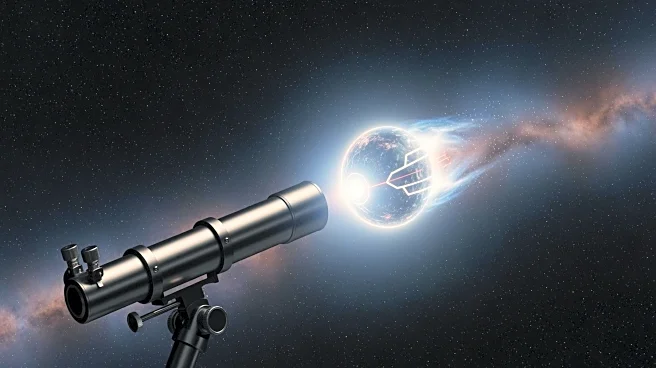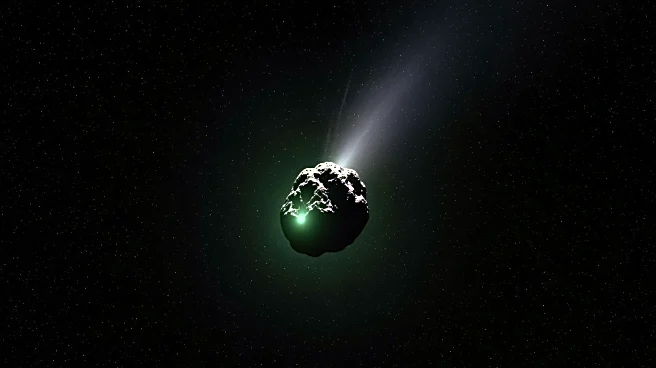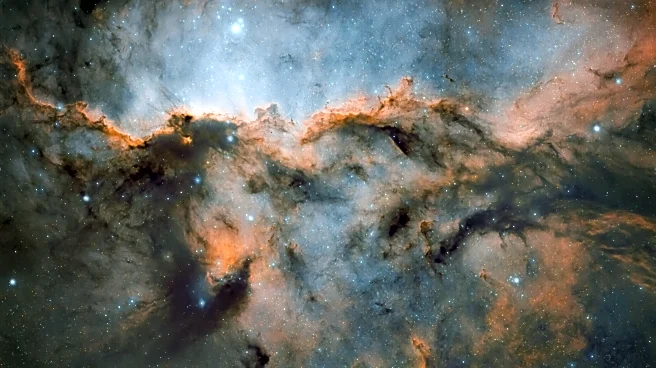What's Happening?
The interstellar object 3I/ATLAS, comparable in size to Manhattan, has defied expectations by not exhibiting a cometary tail after passing the Sun. Observations from the R. Naves Observatory in Spain revealed
no tail, which is typically formed by dust and gas being pushed away by solar radiation. This anomaly has led Harvard astrophysicist Avi Loeb to suggest that the object might not be a natural comet, but potentially an artificial alien craft. The object, which entered the Solar System on June 14, is now moving towards Jupiter, with further observations planned by NASA and the European Space Agency.
Why It's Important?
The unusual behavior of 3I/ATLAS challenges existing scientific understanding of cometary physics and raises intriguing possibilities about its nature. If the object is indeed artificial, it could have profound implications for our understanding of interstellar phenomena and the potential for extraterrestrial technology. The scientific community is closely monitoring the object as it continues its journey, with upcoming observations expected to provide more insights. This event highlights the importance of international collaboration in space exploration and the need for advanced observational technologies.
What's Next?
As 3I/ATLAS approaches Jupiter, it will be closely observed by orbiters from NASA and the European Space Agency. These observations are expected to provide more detailed data on the object's composition and behavior. The scientific community is particularly interested in whether the object will develop a tail as it moves further from the Sun. The results could either confirm or refute the hypothesis of its artificial origin, potentially leading to new theories about interstellar objects.












